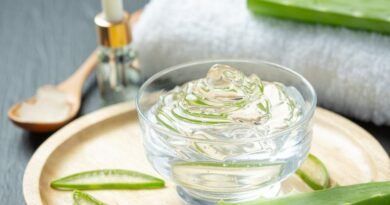Fried hair, characterized by excessive dryness, split ends, and a lackluster appearance, is a common consequence of frequent heat styling, chemical treatments, and environmental stressors. Recognizing the significance of addressing this issue is crucial for maintaining overall hair health and a vibrant appearance. This guide explores effective treatments to reverse and restore fried hair, offering practical solutions for those grappling with damaged locks. By understanding the causes and signs of fried hair, individuals can embark on a journey to revitalize their strands. From nourishing masks and protein treatments to protective hairstyles and professional interventions, this comprehensive outline aims to provide actionable steps for reclaiming healthy, lustrous hair. Emphasizing both at-home care and the importance of professional guidance, the following sections delve into a range of strategies tailored to meet diverse needs and preferences.
Best Treatments to Fix and Restore Fried Hair
Deep Conditioning

Revive fried hair with weekly deep conditioning treatments using products enriched with nourishing ingredients like argan oil, coconut oil, or shea butter. Opt for masks featuring avocado, olive oil, honey, or proteins to strengthen and hydrate. Apply a protein treatment sparingly for added strength, avoiding brittleness. Minimize heat styling, use a heat protectant, and trim regularly to eliminate split ends. Choose sulfate-free, moisturizing shampoos, and rinse with cool water to seal cuticles. Embrace silk or satin pillowcases to reduce friction and breakage. Consistency is crucial for restoring hair health; consult a stylist for severe damage.
Also, Read – 7 homemade hair masks to tame your dry and frizzy hair
Hair Masks
Revitalize your fried locks with hydrating hair masks. Opt for formulas containing nourishing ingredients like avocado, olive oil, or honey to restore moisture and shine. Masks enriched with proteins, such as keratin, help strengthen damaged strands. Apply a generous amount, focusing on mid-lengths to ends, and leave it on for the recommended time. For deeper penetration, consider using a warm towel or shower cap. Incorporate a hair mask into your routine at least once a week to repair and rejuvenate your hair. With regular use, these masks can transform dry, damaged hair into a softer, healthier mane.
Protein Treatments
Revive fried hair with protein treatments to fortify and repair. Choose products containing keratin or other protein-rich ingredients to strengthen weakened strands. Be cautious not to overuse, as excessive protein may lead to brittleness. Apply the treatment evenly, focusing on the damaged areas, and follow the recommended instructions. These treatments work by replenishing lost protein, essential for maintaining hair structure and resilience. Integrate protein treatments into your routine sparingly, alternating with moisturizing treatments for a balanced approach. With consistent use, your hair can regain strength, elasticity, and a healthier appearance, combating the effects of damage and restoring vitality.
Avoid Heat Styling

Safeguard your hair from further damage by minimizing heat styling. Embrace your natural texture and reduce reliance on flat irons, curling wands, and blow dryers. If heat styling is unavoidable, apply a heat protectant spray or serum beforehand to create a barrier against high temperatures. Opt for air-drying whenever possible to allow your hair to recover. Limiting heat exposure helps prevent moisture loss, breakage, and split ends. Give your hair a break, allowing it to rejuvenate and regain strength naturally. With less heat stress, you’ll contribute to the overall health and resilience of your hair, promoting a smoother and shinier appearance.
Also, Read – 8 Best Hair Oils For Hair Fall And Damage Control
Trimming
Regular trims are essential for restoring fried hair. Schedule a trim every 6-8 weeks to eliminate split ends and prevent further damage. Trimming removes the oldest and most damaged parts of your hair, promoting healthier growth. It prevents split ends from traveling up the hair shaft, reducing the risk of breakage. Even if you’re growing your hair, maintaining regular trims ensures a cleaner, more polished look. A stylist can customize the trim to your hair’s needs, promoting a fresh, revitalized appearance. Consistent trims are a key component of a hair care routine, contributing to the overall health and vitality of your locks.
Gentle Shampoo
Choose a sulfate-free, gentle shampoo to rescue fried hair. Sulfates can strip natural oils, exacerbating dryness and damage. Opt for moisturizing formulas with ingredients like argan oil or shea butter to nourish and hydrate. Wash your hair less frequently, allowing natural oils to restore moisture. Massage the shampoo gently into your scalp, avoiding aggressive scrubbing that may worsen damage. This approach preserves the hair’s natural oils and promotes a healthier, softer texture. A gentle shampoo, used in conjunction with other reparative measures, contributes to the recovery of fried hair, leaving it cleansed, nourished, and less prone to further damage.
Cool Water Rinses
Finish your hair care routine with cool water rinses for a revitalizing touch. After conditioning, rinse your hair with cool water to help seal the cuticles and enhance shine. Cool water closes the hair shaft, preventing moisture loss and reducing frizz. This simple step also promotes a smoother, sleeker appearance. Hot water can strip away natural oils, contributing to dryness and damage. Embrace cool water rinses as a refreshing finale to your hair care regimen, contributing to the overall health and luster of your locks. This easy adjustment helps maintain moisture balance, leaving your hair looking and feeling healthier.
Silk or Satin Pillowcases

Upgrade your hair care routine with silk or satin pillowcases for healthier tresses. Unlike cotton, these smooth fabrics reduce friction and minimize breakage, preventing further damage to your hair. The silky surface also helps maintain your hairstyle for longer periods. Cotton pillowcases can absorb moisture, leading to dryness, while silk and satin preserve your hair’s natural oils. This simple switch contributes to smoother, less tangled strands, reducing the risk of split ends. Embrace the luxurious feel and benefits of silk or satin pillowcases to wake up with frizz-free, more manageable hair. It’s an effortless way to promote the overall health and beauty of your locks.
Conclusion
In conclusion, rescuing fried hair demands a multi-faceted approach, incorporating nourishing treatments, preventive measures, and professional insights. Consistency is key, as is embracing a holistic hair care routine. By prioritizing hydration, minimizing heat exposure, and adopting protective styles, individuals can foster long-term hair health. Remember, patience is paramount on this journey to revitalizing your locks. With dedication to these strategies, one can ultimately achieve restored, vibrant, and resilient hair.
FAQs
Hair becomes fried due to excessive heat styling, chemical treatments, and environmental factors that strip away moisture and damage the hair cuticle.
Signs of fried hair include extreme dryness, split ends, a rough texture, and a lack of shine. It may also be prone to breakage and difficult to manage.
Yes, there are several at-home treatments such as moisturizing masks, hot oil treatments, and protein treatments that can help repair and restore fried hair.







